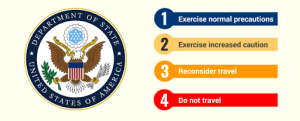ASU News [science & tech]
Capturing the public’s interest is a key component for “New Space,” where commercial companies are filling in some of the roles that had been traditionally played by NASA, and education has an important role to play, said Ariel Anbar, a professor in Arizona State University’s School of Earth and Space Exploration.
 |
| An artist’s conception of the Dragon capsule developed by Space Exploration Technologies (SpaceX), one of six companies designing launch vehicles and spacecraft designs for NASA’s Commercial Crew Program. Photo by: NASA/Wikimedia Commons |
This new role for academia is “a deeper, more authentic relationship than providing training and science majors” to industry, he said. Educating non-science majors is also important.
“Investors in space companies primarily are not going to be science majors,” Anbar said. “They are business majors, philosophy majors, history majors. These are the people who need to have a good understanding of what is done out there and how it affects us down here.”
Anbar was speaking at a Nov. 15 forum on the future of space exploration at the National Press Club. The forum featured a panel of space industry experts discussing the future of space exploration in a time of curtailed NASA funding and a need of more collaboration between industry, academia and the government.
The panel included Lori Garver, former Deputy Administrator, NASA; Alex Saltman, executive director, Commercial Space Flight Federation; Steve Isakowitz, president, Virgin Galactic; Jon Morse, CEO, Boldly Go Institute; and Laurie Leshin, dean, School of Science, Rensselaer Polytechnic Institute.
Anbar said a key to success in this New Space era is seeking to garner public interest and support.
“We need to think of public interest as a market,” he said. “We have to figure out ways to tap that market.”
One way Anbar proposed is for a university and space company to work together and set up a MOOC (massively open on-line course) that would provide a portal into the work and missions of the space company.
“Missions can go for several years in development and execution,” Anbar said. “The MOOC could provide an educational experience that could last a student’s career and provide insight and experience” unparalleled today.
If they added in a nominal cost of taking part in the MOOC, of say $100, then it in turn could provide funding to the company for future missions.
“The goal is to match a public interest with a commercial interest,” Anbar said.
The School of Earth and Space Exploration is an academic unit in ASU’s College of Liberal Arts and Sciences.
Back to News
